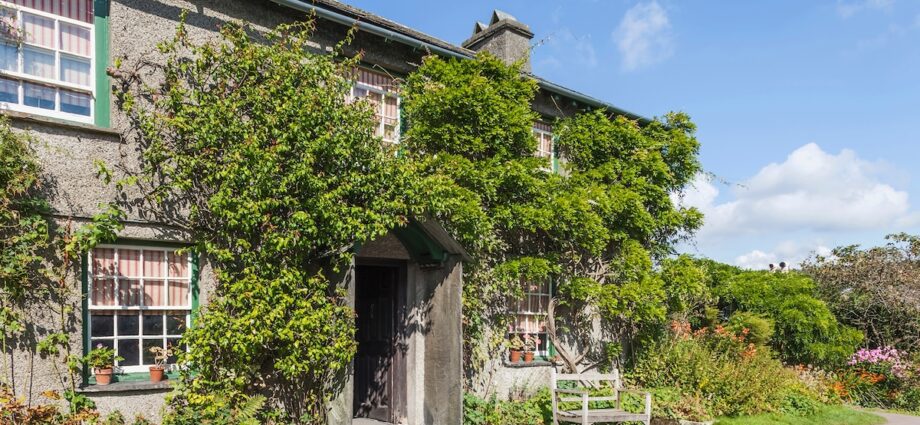With its rugged coastlines, sprawling cities and spirit-stirring rural beauty, England has long proved a source of creative inspiration for writers who, in turn, have left their artistic mark on the country. Whether it was Agatha Christie plotting far-fetched mysteries in the seaside town of Torquay, Devon or the Brontë sisters swooning over the moody moors of Haworth, Yorkshire, seeing England through the eyes of its literary greats can offer readers a deeper connection to their favourite works. Here’s how to plan a family road trip in the footsteps of five of England’s most famous writers, visiting the homes, landscapes and cities that inspired them.
Day 1-2: meet Paddington Bear
With its history-laden streets and instantly recognisable icons, London has produced an extraordinary number of fictional characters over the years, but Michael Bond’s marmalade-quaffing Paddington Bear is arguably among its most famous. Make first for Paddington Station, Brunel’s spectacular feat of Victorian engineering. Here you can pay your respects at sculptor Marcus Cornish’s bronze statue of the beloved children’s book character (its permanent home is on Platform One). And while the Brown family’s 32 Windsor Gardens address is fictional, you can get a sense of where Paddington lived by wandering the grand stucco-fronted mansions of nearby Maida Vale, the canal side neighbourhood that Bond used to call home. If you’re in town before 30 March 2025, the immersive Paddington Bear Experience is a chance to meet the bear himself.

While in London Paddington fans can uncover treasures at Alice’s Antiques on Portobello Road, famously depicted as Mr Gruber’s quirky shop in the film adaptation.
Photograph by Izzet Keribar, Getty Images
Where to stay: The Royal Lancaster London is the ideal base for exploring the landmarks featured in the Paddington books and films, like the Natural History Museum and Portobello Road Market (Alice’s Antiques featured as Mr Gruber’s shop in the film). Afterwards, dig into cake, cuppas and marmalade sandwiches at the hotel’s family-friendly afternoon tea.
Day 3: follow in Robin Hood’s footsteps
Hire a car (find great value options across London using sites such as Skyscanner) and make the three-hour drive from London to Nottinghamshire, watching the countryside unfold in a soothing tapestry of bucolic villages, historic churches and rolling meadows. Here, you’ll find the lush oak woodland of Sherwood Forest, home to Robin Hood — the famous outlaw who, according to folklore, stole from the rich and gave to the poor. A short but occasionally muddy gander down well-marked paths brings you to the foot of Major Oak, a gargantuan 33ft tree that legend suggests was a prime hideout for the outlaw and his merry men.
Where to stay: Bed down at The Forest Lodge in Edwinstowe, a traditional English pub/B&B with cosy nooks, low beams and roaring fires. Here you’ll find hearty suppers and hoppy pints on tap, right next to the forest.
Day 4: discover the inspiration for Dracula
Head 130 miles northeast to Whitby in Yorkshire, the salt-whipped seaside town that Bram Stoker visited in 1890 and declared the inspiration for his gothic masterpiece Dracula. The crumbling ruins of 7th-century Whitby Abbey, perched ominously on the East Cliff overlooking the town, left a lasting impression on the Irish author. To see this ruinous Medieval relic in all its glory, retrace the steps of Stoker’s vampire by taking the famous 199 stone steps that lead up from the town. A one-minute walk takes you to the nearby St Mary’s Church, with its eerie tombstones facing out to sea.

The ruins of 7th-century Whitby Abbey loom eerily over the popular seaside town, having formed the inspiration for Bram Stoker’s gothic novel, Dracula.
Photograph by Kev Hill, Getty Images
Where to stay: When your feet are tired from traversing the steep seafront, kick off your shoes at The Stables, a former 17th-century farmhouse that’s been reworked into a boutique hotel. The family room with bunks is designed for younger guests as you hunker down ahead of your next pit stop.
Day 5-6: visit the home of Peter Rabbit
The absurdly scenic Lake District, a two-and-a-half drive west, is closely tied to many authors, including Beatrix Potter, who purchased Hill Top in 1905 and lived there until her death in 1943. Today, this wisteria-clad farmhouse is a National Trust property that’s open to visitors from mid-February to early November; those familiar with the writer’s works will instantly recognise its green-painted gate and grandfather clock from her illustrated tales. A half-hour drive takes you to the foot of Dove Cottage in Grasmere, which was the home of William Wordsworth. Describing it as ‘the loveliest spot that man hath ever found’, the Cumbrian native penned many of his poems from this peaceful retreat.
Where to stay: Feel a deep connection to Wordsworth Country at the Daffodil Hotel & Spa, with its characterful views of the poet’s much-loved Grasmere Lake and the cloud-capped fells beyond.
This paid content article was created for the Skyscanner. It does not necessarily reflect the views of National Geographic, National Geographic Traveller (UK) or their editorial staffs.
To subscribe to National Geographic Traveller (UK) magazine click here. (Available in select countries only).

